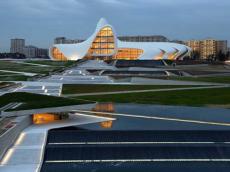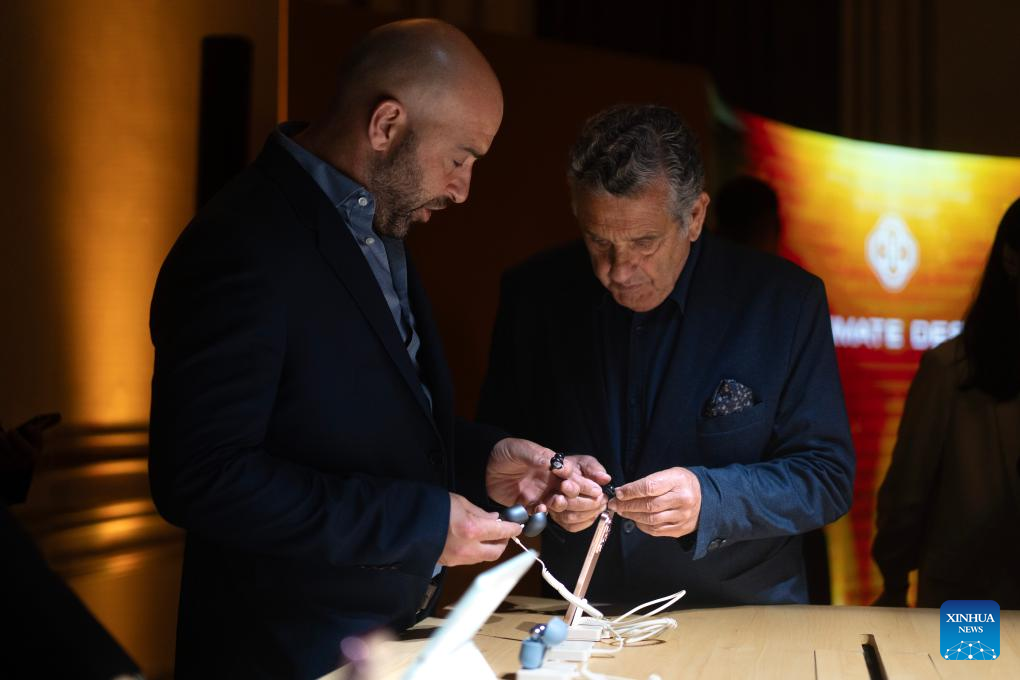|
|
TODAY.AZ / Weird / Interesting
Heydar Aliyev Cultural Center among best architectural projects of 2012 - PHOTOS
06 November 2012 [19:03] - TODAY.AZ
 The Heydar Aliyev Cultural Center constructed in Baku and put into operation this year entered the list of best architectural projects of 2012. Architectural Digest spotlights a dozen showstopping architectural
projects around the world that people will be talking about this
year—and beyond.
The Heydar Aliyev Cultural Center constructed in Baku and put into operation this year entered the list of best architectural projects of 2012. Architectural Digest spotlights a dozen showstopping architectural
projects around the world that people will be talking about this
year—and beyond. Zaha Hadid’s signature amazing curves are on full display in the Heydar Aliyev Cultural Center, a fluid form constructed of glass-reinforced concrete that emerges from the folds of the landscape’s natural topography. This major new venue will play a pivotal role in the redevelopment of the Azerbaijani capital, housing a conference hall with three auditoriums, a library, and a national museum.
For nearly 20 years, the Dutch firm MVRDV has created bold, often boldly geometric projects. Its headquarters for the Norwegian financial group DNB in the fast-developing Bjørvika neighborhood on Oslo’s waterfront is no exception. “The building is basically a large box of Legos,” says MVRDV principal Winy Maas. “Shuffling individual components of the block slightly allows for more natural light inside. Removing some elements and adding others elsewhere creates fantastic outside spaces. This play leads to an unexpected, complex structure.”
As bombastic as any building conceived in the past decade, the Pazhou Hotel, designed by the international firm Aedas, stacks guest-room floors in two staggered piles atop a nearly 200-foot-high atrium that links exhibition and retail spaces. Located in Guangzhou’s rapidly expanding Pazhou district, the new building strives to be unique among the bold designs that already occupy the area, including Zaha Hadid’s Opera House just across the Pearl River
For years China has imported big-name architects (Rem Koolhaas, Zaha Hadid, Steven Holl) to create out-of-this-world structures. But now China is producing its own generation of daring designers. Beijing-based BIAD UFo’s Phoenix International Media Center is giving Herzog & de Meuron’s “Bird’s Nest” Olympic stadium a run for its money. The complex features a pair of buildings with offices and TV-broadcasting facilities encased in a dramatic doughnut-shaped shell of swirling steel.
Of all the buildings added to the London skyline in the run-up to the Olympics, the most imposing is unquestionably Renzo Piano’s London Bridge Tower, located on the south bank of the Thames, next to the bustling London Bridge transportation hub. At 72 stories and 1,016 feet high, it dwarfs the mostly low buildings around it and will be the tallest building in the European Union. Nicknamed the Shard, because of its façade of tapering glass panels, the tower will contain offices, apartments, a hotel and spa, restaurants, shops, and, at its pointed top, a 15-story public viewing gallery.
Founded in 1968, Viennese firm Coop Himmelb(l)au has taken its unique brand of Deconstructivist architecture from Europe to the U.S. and more recently to China. At nearly 1.3 million square feet, its Dalian International Conference Center—which includes exhibition spaces and a performance hall—is one of its biggest projects to date. The building’s floating, wavelike envelope (which sits atop a load-bearing shell structure) and soft, rippling surfaces evoke the forces of the sea, referencing Dalian’s history as an important port.
/Yahoo/
URL: http://www.today.az/news/interesting/114784.html
 Print version
Print version
Views: 15583
Connect with us. Get latest news and updates.
See Also
- 19 February 2025 [22:20]
Visa and Mastercard can return to Russia, but with restrictions - 05 February 2025 [19:41]
Japan plans to negotiate with Trump to increase LNG imports from United States - 23 January 2025 [23:20]
Dubai once again named cleanest city in the world - 06 December 2024 [22:20]
Are scented candles harmful to health? - 23 November 2024 [14:11]
Magnitude 4.5 earthquake hits Azerbaijan's Lachin - 20 November 2024 [23:30]
Launch vehicle with prototype of Starship made its sixth test flight - 27 October 2024 [09:00]
Fuel prices expected to rise in Sweden - 24 October 2024 [19:14]
Turkiye strikes terror targets in Iraq and Syria - 23 October 2024 [23:46]
Kazakhstan supplied almost entire volume of oil planned for 2024 to Germany in 9 months - 23 October 2024 [22:17]
Taiwan reported passage of Chinese Navy aircraft carrier near island
Most Popular
 Hornet's nest has been stirred up: how topic of Western Azerbaijan scared revanchists
Hornet's nest has been stirred up: how topic of Western Azerbaijan scared revanchists
 Huawei debuts new smartphones and devices in Argentina
Huawei debuts new smartphones and devices in Argentina
 Energy Ministry signs new contract with US-based White & Case LLP
Energy Ministry signs new contract with US-based White & Case LLP
 Azerbaijan, Turkiye sign pact to strengthen military security
Azerbaijan, Turkiye sign pact to strengthen military security
 Russia open to consultations on TRIPP initiative with Armenia
Russia open to consultations on TRIPP initiative with Armenia
 Why Iran fears Corridor that Armenia sees as lifeline
Why Iran fears Corridor that Armenia sees as lifeline
 PM Asadov mulls regional co-op and North-South corridor with Astrakhan governor
PM Asadov mulls regional co-op and North-South corridor with Astrakhan governor






